
تاريخ الرياضيات

الاعداد و نظريتها

تاريخ التحليل

تار يخ الجبر

الهندسة و التبلوجي


الرياضيات في الحضارات المختلفة

العربية

اليونانية

البابلية

الصينية

المايا

المصرية

الهندية


الرياضيات المتقطعة

المنطق

اسس الرياضيات

فلسفة الرياضيات

مواضيع عامة في المنطق


الجبر

الجبر الخطي

الجبر المجرد

الجبر البولياني

مواضيع عامة في الجبر

الضبابية

نظرية المجموعات

نظرية الزمر

نظرية الحلقات والحقول

نظرية الاعداد

نظرية الفئات

حساب المتجهات

المتتاليات-المتسلسلات

المصفوفات و نظريتها

المثلثات


الهندسة

الهندسة المستوية

الهندسة غير المستوية

مواضيع عامة في الهندسة

التفاضل و التكامل


المعادلات التفاضلية و التكاملية

معادلات تفاضلية

معادلات تكاملية

مواضيع عامة في المعادلات


التحليل

التحليل العددي

التحليل العقدي

التحليل الدالي

مواضيع عامة في التحليل

التحليل الحقيقي

التبلوجيا

نظرية الالعاب

الاحتمالات و الاحصاء

نظرية التحكم

بحوث العمليات

نظرية الكم

الشفرات

الرياضيات التطبيقية

نظريات ومبرهنات


علماء الرياضيات

500AD

500-1499

1000to1499

1500to1599

1600to1649

1650to1699

1700to1749

1750to1779

1780to1799

1800to1819

1820to1829

1830to1839

1840to1849

1850to1859

1860to1864

1865to1869

1870to1874

1875to1879

1880to1884

1885to1889

1890to1894

1895to1899

1900to1904

1905to1909

1910to1914

1915to1919

1920to1924

1925to1929

1930to1939

1940to the present

علماء الرياضيات

الرياضيات في العلوم الاخرى

بحوث و اطاريح جامعية

هل تعلم

طرائق التدريس

الرياضيات العامة

نظرية البيان
Gaspard Gustave de Coriolis
المؤلف:
F S Freiman
المصدر:
Gaspard Gustave Coriolis
الجزء والصفحة:
...
17-7-2016
659
Born: 21 May 1792 in Paris, France
Died: 19 September 1843 in Paris, France

Gaspard-Gustave de Coriolis's father was Jean-Baptiste-Elzéar Coriolis and his mother was Marie-Sophie de Maillet. His father became a sub-lieutenant in the Bourbonnais regiment in 1773, fought in the American campaign in the Rochambeau corps in 1780, and returned to France when he was promoted to captain on 15 July 1784. He became an officer with Louis XVI in 1790 but this put him in difficulties when the monarchy was in trouble. The King tried to escape and fled Paris on 21 June 1791 but he was caught at Varennes and brought back to the capital. Gaspard-Gustave Coriolis was born in June 1792 and on 21 September of that year the monarchy was abolished. Coriolis's father fled to Nancy where he became an industrialist. Louis XVI was guillotined in Paris in January 1793.
Coriolis was brought up in Nancy and attended school there. He sat the entrance examination for the École Polytechnique in 1808 and he was placed second of all the students entering that year. On graduating he entered the École des Ponts et Chaussées in Paris. With the engineering corps he worked for several years in the Meurthe-et-Moselle district and the Vosges mountains. After his father died Coriolis had to support the family and, with his health already poor, he decided to accept a post in the École Polytechnique in 1816 tutoring analysis. He had been recommended for this position by Cauchy.
Coriolis became professor of mechanics at the École Centrale des Artes et Manufactures in 1829. In July 1830 there was a revolution and, following this Cauchy left Paris in September 1830. Political events in France meant that Cauchy was now required to swear an oath of allegiance to the new regime and when he failed to return to Paris to do so he lost all his positions there. Coriolis was offered Cauchy's position at the École Polytechnique but by this time he was highly involved in his research and decided not to take on any further teaching duties.
Despite not accepting further duties at the École Polytechnique, Coriolis did take on a position at the École des Ponts and Chaussées in 1832. There he teamed up with Navier teaching applied mechanics. Navier died in 1836 and Coriolis was appointed to his chair at the École des Ponts and Chaussées. He was also elected to replace Navier in the mechanics section of the Académie des Sciences. Coriolis continued teaching at the École Polytechnique until 1838 when he decided to end teaching and take on the role of director of studies. He did this task extremely well but his poor health which had afflicted him since he was a young man became much worse in the spring of 1843 and a died a few months later.
Coriolis studied mechanics and engineering mathematics, in particular friction, hydraulics, machine performance and ergonomics. He introduced the terms 'work' and 'kinetic energy' with their present scientific meaning. Coriolis began developing his ideas in 1819 and he showed some papers to Poncelet in 1824. Both Coriolis and Poncelet published in 1829; the paper by Coriolis being Du Calcul de l'effet des machines. Despite the two papers appearing in 1829 there was no argument as to who initiated the idea, with Poncelet acknowledging that the word "work" was brought in by Coriolis. The article [5] simplifies this piece of history so much that it could be misleading on this point. The contribution of Coriolis, Poncelet, and Navier to the concept of 'work' is examined in detail in [6].
Coriolis proposed a unit of work, namely the 'dynamode'. The unit represents 1000 kilogram-metres and was proposed by Coriolis as a measure which could provide a sensible unit with which to measure the work which a person might do, a horse, or a steam engine. However, although his term 'work' has become standard, the dynamode did not prove popular as the unit of work.
It is not the ideas of 'work' for which Coriolis is best remembered, however, rather it is for the Coriolis force which appears in the paper Sur les équations du mouvement relatif des systèmes de corps (1835). He showed that the laws of motion could be used in a rotating frame of reference if an extra force called the Coriolis acceleration is added to the equations of motion.
In 1835 Coriolis wrote on a mathematical theory of billiards in Théorie mathématique des effets du jeu de billiard. He also wrote Traité de la mécanique des corps solides (1844).
Costabel sums up his contribution as follows [1]:-
One application of [Coriolis force] is to fluid masses on the earth's surface. Accordingly, in 1963, a French oceanographic research vessel was named for [Coriolis], thus honouring the scientist - and not the engineer - in a fitting tribute to a career characterised by its union of theory and technical application.
1. P Costabel, Biography in Dictionary of Scientific Biography (New York 1970-1990).
http://www.encyclopedia.com/doc/1G2-2830900989.html
2. Biography in Encyclopaedia Britannica.
http://www.britannica.com/eb/article-9026304/Gustave-Gaspard-Coriolis
Books:
3. F S Freiman, Gaspard Gustave Coriolis (Moscow, 1961).
Articles:
4. R Dugas, Sur l'origine du théorème de Coriolis, Rev. Sci. (Rev. Rose Illus.) 79 (1941), 267-270.
5. O I Franksen, The virtual work principle - a unifying systems concept, in Structures and operations in engineering and management systems, Trondheim, 1980 (Trondheim, 1981), 17-152.
6. I Grattan-Guinness, Work for the workers : advances in engineering mechanics and instruction in France, 1800-1830, Ann. of Sci. 41 (1) (1984), 1-33.
 الاكثر قراءة في 1780to1799
الاكثر قراءة في 1780to1799
 اخر الاخبار
اخر الاخبار
اخبار العتبة العباسية المقدسة

الآخبار الصحية















 قسم الشؤون الفكرية يصدر كتاباً يوثق تاريخ السدانة في العتبة العباسية المقدسة
قسم الشؤون الفكرية يصدر كتاباً يوثق تاريخ السدانة في العتبة العباسية المقدسة "المهمة".. إصدار قصصي يوثّق القصص الفائزة في مسابقة فتوى الدفاع المقدسة للقصة القصيرة
"المهمة".. إصدار قصصي يوثّق القصص الفائزة في مسابقة فتوى الدفاع المقدسة للقصة القصيرة (نوافذ).. إصدار أدبي يوثق القصص الفائزة في مسابقة الإمام العسكري (عليه السلام)
(نوافذ).. إصدار أدبي يوثق القصص الفائزة في مسابقة الإمام العسكري (عليه السلام)


















